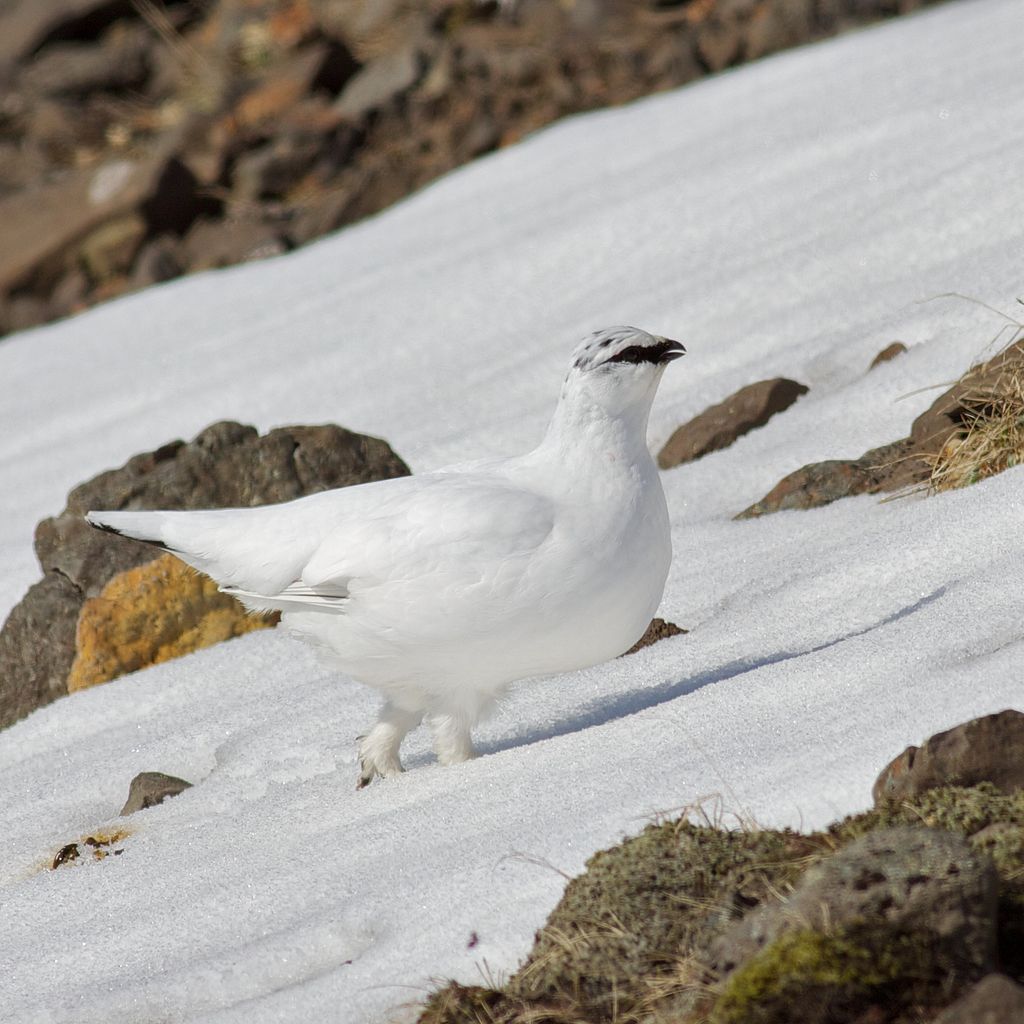No, we aren’t going back to that well-known place to buy frozen foods but to that well-known country of Gyr Falcons, King Eiders and Brunnich’s Guillemots.
Apparently, the traditional Icelandic Christmas dish is a Ptarmigan, but numbers have declined and so Iceland has imposed strict quotas on numbers shot. Birds should only be shot for personal consumption but it appears that Icelandic shooters cheat on this restriction. I’m shocked.

According to this slightly dated article, Icelanders lacking a dead Ptarmigan on their plate are importing grouse from Scotland to fill the void, fill their plates and fill their stomachs. The article says Black Grouse (it actually says black grouse which could signify the species of grouse or the colour of the meat) but I think they probably mean Red Grouse (my Icelandic is rubbish by the way).
If anyone has any more information on this: is it true? what is the email address of the Icelandic Foood Standards Agency? where do the Icelanders get their Red Grouse? is this the type of thing that Liam Fox thinks will revitalise our economy in a post-Brexit era? could you tell the difference between Ptarmigan meat and Red Grouse meat in a blind tasting? then please do get in touch.
[registration_form]
I wouldn’t put anything past Iceland at the moment. Apparently they can’t even identify the largest animal on the planet properly.
Yep, I’m with Ed on this one. Fascinating country, lovely people, courageous football team – still killing whales and eating them.
In the interests of fairness, most of the whale meat is eaten by tourists in tourist restaurants, not the local Icelanders. No excuse I know, but surely most of the blame lies with those tourists who choose to eat it. Greenpeace has an exhibit on the dockside in Reykjavik giving people the information about whaling and asking tourists not to order it. Sad, because more money is made from whale-watching tours than catching them.
Same with raptor persecution really. Part of the blame must lie with those who pay to shoot game or who eat it. Without the income from shooting parties there would be no money to pay for gamekeeping and intensive gamebird production.
“Most of the blame lies with those tourists who choose to eat it”
It may well be the case that most of the Icelandic whale meat is eaten by tourists and I absolutely agree that those same tourists consequently bear a responsibility for the killing of whales and should be encouraged to avoid eating whale meat during their stay in Iceland. Nevertheless I think you are letting the Icelandic government and the Icelandic whaling industry off the hook rather.
It seems to me to be extremely doubtful that there would be any detectable fall in visitor numbers to Iceland if whale meat was not available. If they could be persuaded to recognise that whaling is a barbaric industry and to do what most of the rest of the World did years ago and ban it, the problem would be removed at a stroke. Very few, if any, tourists would even notice that the option of trying whale meat was no longer available.
I’ve no evidence to refute your assertion that most is eaten by tourists. I can only offer personal experience. Our Icelandic guide advised that the whale meat came from whales “caught accidentally so it was okay to eat it”.
Not having a ‘head that buttons up at the back’ as they might say in Glasgow, we decided not to help out and didn’t eat the whale meat on offer and gave skeptical looks to anyone who thought it okay.
I read somewhere once, that Ptarmigan were once so plentiful in Iceland, that they were exported
to Europe, as ballast in returning trading ships.
Trapit – blimey!
Fin whale meat in Iceland is destined for export to Japan where, according to some reports, some of it will end up as pet food. Minke whale meat is eaten in Iceland, some of it by tourists, but whether it is most, as Carole says, is debatable. The cruelty involved in this industry is appalling.